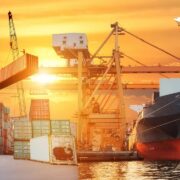
Global Supply Chain Resilience: Lessons Learned from Recent Crises
The COVID-19 pandemic, the Suez Canal blockage, semiconductor shortages, and other recent events have highlighted the vulnerabilities in global supply chains. These disruptions have sent shockwaves through industries worldwide, prompting a reevaluation of supply chain strategies and the need to enhance resilience in an interconnected global economy. Here are some ideas from professionals such as Kavan Choksi.
The Vulnerabilities Exposed: The COVID-19 pandemic was the first major wake-up call for supply chains. Lockdowns, labor shortages, and logistical challenges disrupted the flow of goods, from medical supplies to consumer electronics. Companies found themselves grappling with production bottlenecks and delayed deliveries.
The Suez Canal Blockage: In March 2021, the grounding of the Ever Given container ship in the Suez Canal further underscored the fragility of global trade routes. The incident blocked a vital maritime artery, disrupting the delivery of goods and revealing the risks associated with the concentration of shipping routes.
Semiconductor Shortages: The ongoing semiconductor shortages, affecting industries from automotive to electronics, highlighted the intricacies of global supply chains. A disruption in the semiconductor supply can have cascading effects on various sectors, emphasizing the need for diversified sourcing and risk mitigation.
Lessons Learned:
- Diversification of Suppliers: Relying on a single source for critical components or materials can be risky. Companies are now exploring diversified sourcing strategies, working with multiple suppliers across different regions to reduce dependency on a single source.
- Inventory Management: Maintaining excess inventory was once seen as costly, but the recent disruptions have shown the importance of buffer stocks. Companies are reevaluating their inventory management practices to ensure they have enough reserves to withstand unexpected disruptions.
- Digitalization and Transparency: The adoption of digital technologies and real-time tracking systems is becoming essential. Transparency along the supply chain allows companies to identify and respond quickly to disruptions, minimizing their impact.
- Resilience Planning: Companies are developing comprehensive resilience plans that encompass risk assessment, scenario planning, and crisis response strategies. Being prepared for various contingencies is now a top priority.
- Localized Production: Some industries are reconsidering the offshoring trend and exploring localized production to reduce supply chain risks. Nearshoring or onshoring can offer more control and faster response times.
- Collaboration: Collaboration with suppliers and partners is crucial. Building strong relationships and open lines of communication can lead to quicker problem resolution and better risk management.
Government and Policy Involvement:
Governments are also recognizing the need to address supply chain vulnerabilities:
- Strategic Stockpiling: Some countries are considering strategic stockpiling of critical goods, especially those related to healthcare and national security.
- Trade Policy Review: Governments are reassessing trade policies and looking for ways to secure essential supplies through international agreements.
- Investment in Infrastructure: Investments in transportation and logistics infrastructure are being prioritized to enhance the resilience of global trade routes.
The recent disruptions in global supply chains have emphasized the critical importance of resilience in an interconnected world. Companies and governments alike are taking proactive steps to mitigate risks and enhance their ability to adapt to unforeseen challenges. While the path to building more resilient supply chains may be complex and require investment, the lessons learned from recent crises are guiding the way toward a more robust and adaptable global supply chain ecosystem. In the face of uncertainty, flexibility and preparedness are becoming the new standard for supply chain management.













Comments